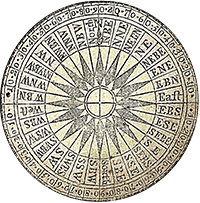
Maybe the shunning of Native American culture varied on individual community standards or that community’s history.
Joseph Doddridge (1769-1826) was born in Pennsylvania. He attended a school in Maryland until he was 18 years of age and then moved westward. He was served the frontier community as clergy, an author, and as a physician. In his writings, Doddridge shared a first hand observation of this topic in the community where he lived:

The flaps were sometimes ornamented with some coarse kind of embroidery work. To the same belt that secured the breech clout, strings which supported the long leggings were attached. When this belt, as was often the case, passed over the hunting shirt, the upper part of the thighs and part of the hips were naked.
The young warrior, instead of being abashed by this nudity, was proud of his Indian like dress. In some few instances I have seen them go into places of public worship in this dress. Their appearance, however, did not add much to the devotion of the young ladies.”
Notes on the Settlements and Indian Wars of the Western Parts of Virginia and Pennsylvania, Doddridge, 1763-1783.
Welcome to “Sharing the Stories of History with Tim Mann”!
Meet Timothy A. Mann, a passionate historian born and raised in the heart of Shelby County, Ohio where Tim’s roots run deep in the rich soil of American history. As the author of articles and books, including “Frontier Miscellany Concerning the Miami County Ohio Militia,” “Colonel John Mann, His Kith and Kin,” and “Frontier Militia – The War of 1812,” Tim’s literary contributions have enlightened and inspired countless history enthusiasts.
Join Tim Mann on a journey through time as he shares fascinating tales, untold stories, and hidden gems from the annals of history. Let’s delve into the past together and uncover the wonders that await in “Sharing the Stories of History with Tim Mann.”




